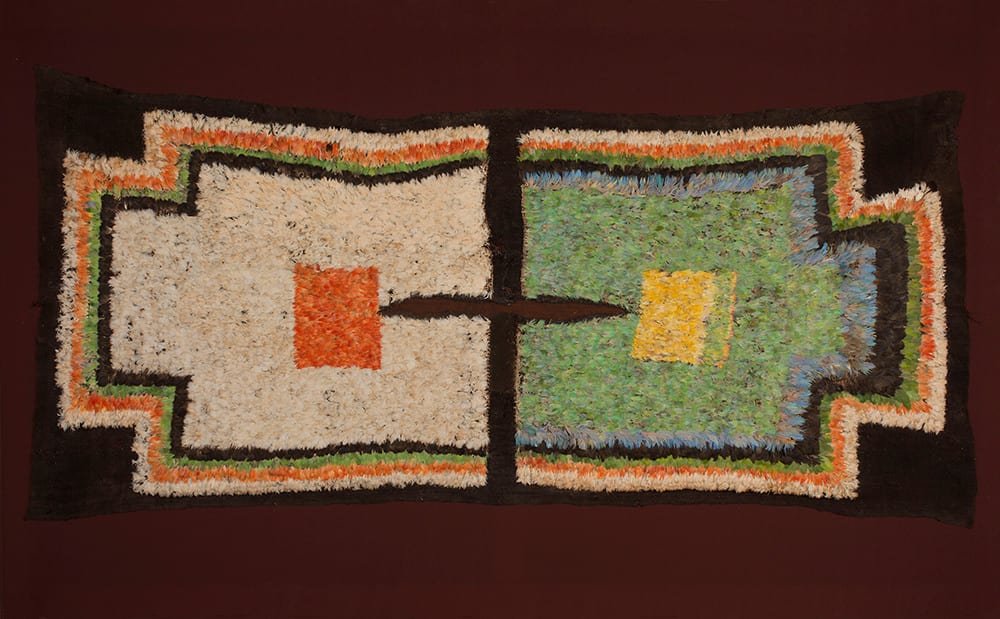

Huari Culture 100 AD-1200 AD
In the Pre-Colombian Andes , feathers were highly valued for their magnificent colours, silken texture, and also as bearers of profound symbolism."The gloss, splendour, and sheen of these feather cloths is of such exceptional beauty that it must be seen to be appreciated," wrote Europeans who arrived in Peru in the early sixteenth century. Astounded by the grandeur and fine quality of the textiles worn by Inca nobility, they particularly admired the luxurious cloth covered with plush, brilliantly coloured feathers of birds from the Amazonian rain forest.
Such portable luxury goods were markers of statues and power, and because the Huari, like other ancient Andean peoples, did not use a writing system, textiles also played an important role in expressing, recording, and preserving concepts about the human, natural, and supernatural realms. The bold minimalistic design, striking formal sophistication, and superb craftsmanship of this tunic appeal intuitively and directly to modern sensibilities, serving as inspiration for twentieth-century artists such as Max Ernst and his wife Dorothea Tanning, who acquired one of the works related to this example now in The Metropolitan Museum collection.
The Huari also forged strong connections with peoples in the prosperous valleys of the Pacific Coast, an arid desert where many Huari and Huari-influenced artworks have been found. This feathered tunic as viewed, from the far southern coastlines, are among these works. Feathers, particularly those from colourful birds, were a highly valued and rarest material in the ancient Andes, and feather-work was likely one of the most treasured of Huari art forms, which also include other types of fine textiles, polychrome ceramics, exquisite personal ornaments made of precious materials, and small-scale sculpture.
Between 600 and 1000 A.D., the Huari people created what many scholars believe was South America's first empire, surpassed in influence and scope only by the better known Inca in the late fifteenth and early sixteenth centuries. The Huari heartland was in the Andes Mountains of present day Chile, Peru and Bolivia, where they built impressive architecture at their capital, also known as Wari, and at several provincial centres. Gifted engineers, they likely connected these centres with road networks that the Inca later expanded; through labor-intensive agricultural innovations, such as terracing and irrigation, they transformed the dry highlands into fertile land.
Many related examples are in the Berlin museums much visited for study and inspirations by the Bauhaus founders, Johannes Itten, Josef Albers and Paul Klee. The Anni and Josef Albers personal collection also contains numerous related examples.
xJoin our mailing list
* denotes required fields
We will process the personal data you have supplied in accordance with our privacy policy (available on request). You can unsubscribe or change your preferences at any time by clicking the link in our emails.

